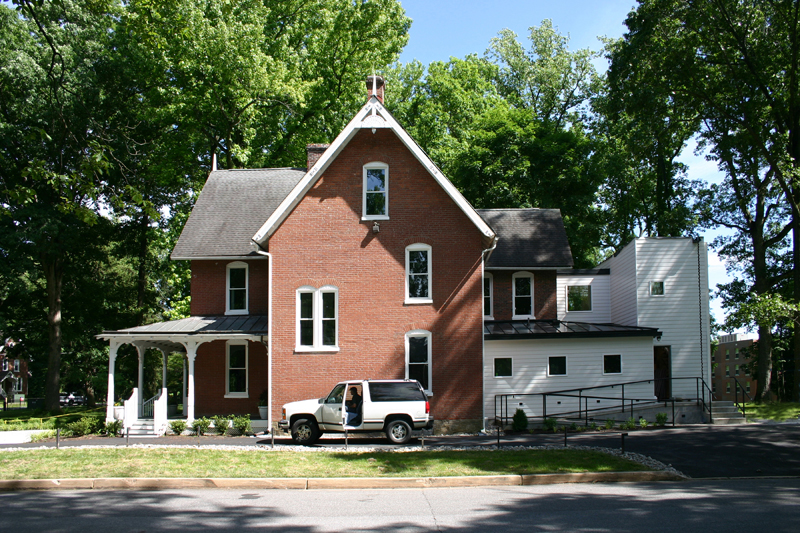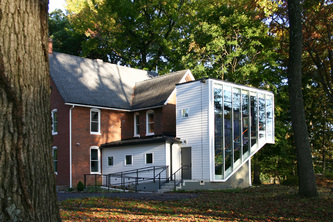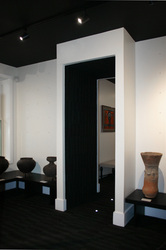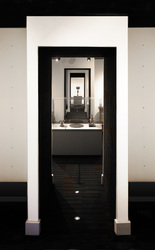HIGHER EDUCATION
Serdab - "Biogen" Teaching space
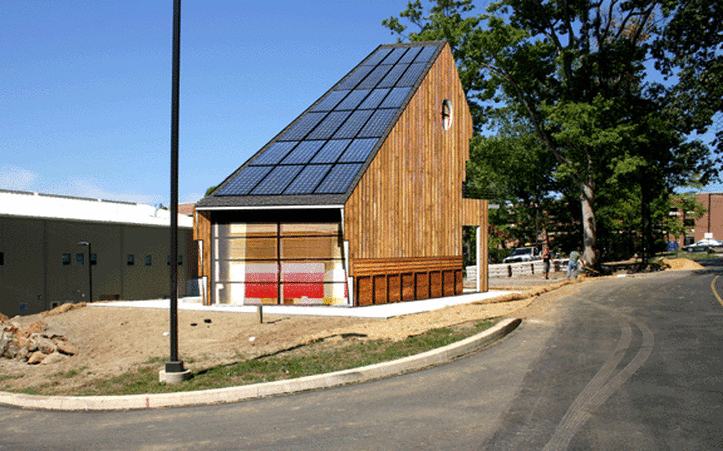
As part of its on-going effort to expand its teaching methods, Delaware County Community College is building an experimental "ultra green" building to be used as a teaching space.
At the request of the Dean, Ed Rahme Architect designed the single-room building for an existing concrete pad site on campus.
Because the carpentry students would construct it, we incorporated a diversity of wood-framing techniques: platform frame, balloon frame and timber frame.
The interior framing was left exposed and the resulting class room was designed with pivoting seats – one wall for projections, one wall with exposed electrical equipment, one wall with an exposed geothermal manifold and one wall for 'whatever'. The interior of the building would be a full-size model of the construction of a building.
Because a primary goal of the design was self sufficiency, we incorporated many green systems - both passive and active. The design incorporated geothermal heating/cooling, photovoltaic panels on the roof, passive solar heating/cooling (including a trombe wall on the south end) and was to be constructed of FSC certified and reclaimed wood.
At the request of the Dean, Ed Rahme Architect designed the single-room building for an existing concrete pad site on campus.
Because the carpentry students would construct it, we incorporated a diversity of wood-framing techniques: platform frame, balloon frame and timber frame.
The interior framing was left exposed and the resulting class room was designed with pivoting seats – one wall for projections, one wall with exposed electrical equipment, one wall with an exposed geothermal manifold and one wall for 'whatever'. The interior of the building would be a full-size model of the construction of a building.
Because a primary goal of the design was self sufficiency, we incorporated many green systems - both passive and active. The design incorporated geothermal heating/cooling, photovoltaic panels on the roof, passive solar heating/cooling (including a trombe wall on the south end) and was to be constructed of FSC certified and reclaimed wood.

SERDAB: While sustainability addresses our environment, the form of the building addresses the universe beyond. As environment changes, the building needs to address something constant. The form aligns with the North Star - the only "fixed" point in the sky. In the same sense as an Egyptian Serdab allows a statue to view the heavens, this teaching space is a constant reminder of the larger world, beyond.
Portals
The Danjuma African Art Center at The Lincoln University
As its first step in making its extensive African Art collection available to the public, The Lincoln University decided to dedicate one of its original campus buildings to accommodate a small portion of the collection.
At first glance the challenge to renovate an historic Victorian house into a gallery for the display of African Art struck us as wrought with tension; however, the more we considered the opportunity, the more we realized that it was an extraordinary chance to establish a dialogue between two very disparate cultures.
First, we researched indigenous African Architecture from the region where the majority of the collection originated. We noticed that the entries into the spaces were emphasized and elongated in the direction of travel. This "thickening" of the walls was intended to provide a transformative space between rooms… A room between rooms. A space to think about spaces… past and future. Because our spaces were small, the need for 'elongating' the transition was consistent with the expression observed in the indigenous tribal architecture.
Second, mud buildings of the region incorporated an integral scaffold for ease of access of needed repairs. As money was tight and the cost of a museum-quality display system was out of reach, we reinterpreted the integral scaffold and recessed a grid of threaded grommets. This allowed for a variety of sizes of threaded rods to be positioned at will to accommodate shelves, hanging panels and hanging artifacts.
At first glance the challenge to renovate an historic Victorian house into a gallery for the display of African Art struck us as wrought with tension; however, the more we considered the opportunity, the more we realized that it was an extraordinary chance to establish a dialogue between two very disparate cultures.
First, we researched indigenous African Architecture from the region where the majority of the collection originated. We noticed that the entries into the spaces were emphasized and elongated in the direction of travel. This "thickening" of the walls was intended to provide a transformative space between rooms… A room between rooms. A space to think about spaces… past and future. Because our spaces were small, the need for 'elongating' the transition was consistent with the expression observed in the indigenous tribal architecture.
Second, mud buildings of the region incorporated an integral scaffold for ease of access of needed repairs. As money was tight and the cost of a museum-quality display system was out of reach, we reinterpreted the integral scaffold and recessed a grid of threaded grommets. This allowed for a variety of sizes of threaded rods to be positioned at will to accommodate shelves, hanging panels and hanging artifacts.

